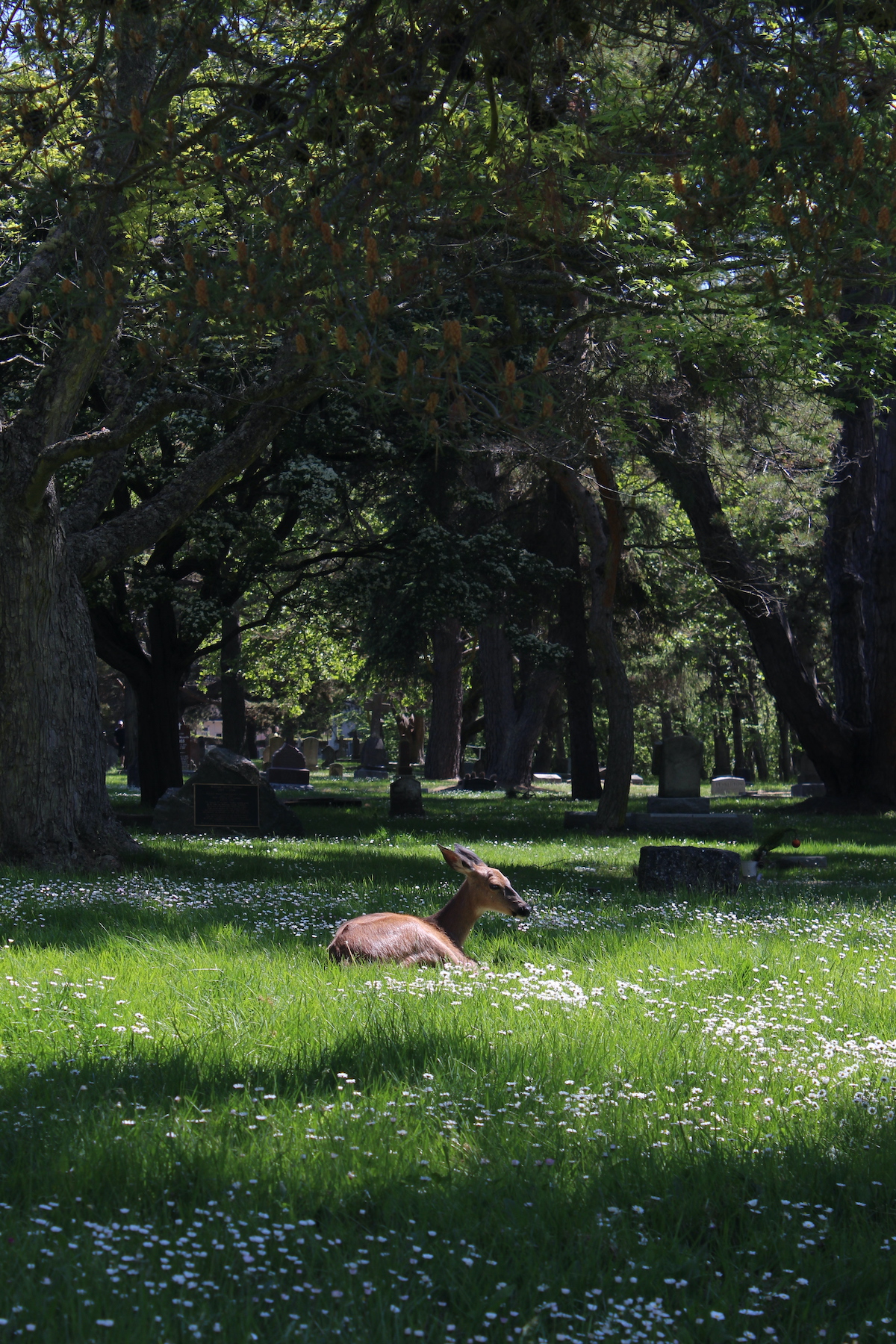Local historian John Adams, who runs Discover the Past Walking Tours, knows a thing or two about interesting places worth a second look in Victoria and there is a reason why he’s passionate about cemeteries.
“When people think about heritage these days, they often think about heritage buildings or artifacts in a museum. Those are, of course, very important but cemeteries are a very important part of our heritage landscape,” said Adams, who also volunteers for the Old Cemeteries Society (OCS).
Many of Victoria’s cemeteries are beautiful, located in prime sea-side spots where they double serve the public as parks. While some people may have a rather bleak outlook on cemeteries, their mind might be changed when they explore the beauty and hidden meaning within them – through a historical lens of their creation in a time that truly embraced and celebrated their cultural significance.
“People these days are sometimes a little bit leery about going to a cemetery … But cemeteries were actually intended in the Victorian era (1837-1901) to inspire people and to serve as places to visit,” said Adams. “They would often be located in beautiful settings, they would be landscaped to take advantage of the views, the tombstones were intended to be almost teaching lessons so they would have sculptures, epitaphs, messages that were intended to tell something about the people who were dead, but also to inspire people.”
Cemeteries are also used by historians as a form of microhistory, a methodology that looks for the answers to bigger questions in small places and in the average details of everyday life.
As you are soon to discover, Victorian cemeteries hold many fascinating discoveries.
CHINESE CEMETERY
Nestled in a grassy, flower-filled field at Oak Bay’s Harling Point, stand the twin towers of the large, white ceremonial altar at the Chinese Cemetery. Ching Ming descendants of buried relatives burn incense and leave offerings here.
As one walks through, taking in the blue waters of the Juan de Fuca Strait and the Olympic Mountains on the horizon, they’ll find a scattering of tombstones with Chinese engravings.

At one time, these Chinese graves were located in Ross Bay Cemetery, segregated in an area so close to the ocean that they sometimes washed away, bones scattering on the shore. Some graves were marked as impersonal as “Chinaman No. X.”
To save the graves, the Chinese Consolidated Benevolent Association bought the land at Harling Point in 1903 – a site selected with ancient concepts of feng shui in mind – and the graves were relocated.
The cemetery stands today as a National Historic Site and honours many of Canada’s first Chinese immigrants who came to build the Canadian Pacific Railway in the late 1800s. The tombstones remain with significant meaning to visitors.
READ MORE: Victoria’s Chinese community honours others at cemetery
 |
| A deer rests among the tombstones in Ross Bay Cemetery. (Samantha Duerksen) |
ROSS BAY CEMETERY
Celebrating its 150th anniversary in March of this year, the Ross Bay Cemetery has a well-earned spot on Tripadvisor as #22 of 156 things to do in Victoria. The 27.5 acres overlooking the ocean are kept in pristine condition, abundant with some of the area’s oldest, most magnificent trees.
The fact that most of the trees are around 100 years old demonstrates the importance of cemeteries as horticultural repositories, said Adams. The parks department actually formerly used Ross Bay Cemetery as a warehouse of tree species and took clippings when they needed to plant new trees in other areas of the city.
As one walks the winding pathways through pines, ornamental cherries, plums, lilac and more, it’s easy to become enchanted.
“The trees were planted in a special way to be picturesque and filled with symbolism,” said Adams. “That’s one of the reasons why evergreen trees are so popular in cemeteries: because they represent the idea of everlasting life.”
Besides the trees, there are other interesting gems that make this cemetery so captivating. These include the graves of famous Canadians like Sir James Douglas and Emily Carr. There’s also the Bossi Angel statue; the grave of John Dean, “the disgruntled politician whose tombstone was erected many years before he died” according to the OCS; the rocket ship that is a pun on the Rockett family name; and the Cross of Sacrifice. Visitors can also check out the newly restored cemetery gates done in the original style.
JEWISH CEMETERY
Built just after the gold rush, which saw a huge influx of European settlers, the Jewish Cemetery is the oldest operating, non-Indigenous cemetery in B.C. that dates back to 1859. “It’s a beautiful place with some very interesting headstones,” said Adams.
Among the buried are Samuel Davies Schultz, an ace baseball player who pitched the first no-hitter in B.C. and was also Canada’s first Jewish judge; and H.E. Levy, who started the first gourmet restaurant in the Pacific Northwest, Levy’s Arcade Oyster Saloon.
Visitors can also pay respect to those who died in the Holocaust at the Holocaust Memorial, which rests inside the gates.
MORE TO UNCOVER
Adams also recommends visiting country church yards, like St. Mary the Virgin in Metchosin. “The ideal time to visit is right around the end of March and early April when it’s an absolute carpet of wild Easter lilies [Fawn Lilies]. It’s absolutely gorgeous.”
Out on the Saanich Peninsula, St. Stephen’s Anglican Church is a highlight. “The trees are actually dripping with moss. People who go there should have a camera because there are wonderful, very romantic scenes from every angle.”
The Old Cemeteries Society was started informally in 1983 by a passionate bunch who wanted to preserve Victoria’s historic cemeteries. Find out more about OCS, local cemeteries, and year-round tours at oldcem.bc.ca.
Do you have a story tip? Email: sam.duerksen@blackpress.ca. Follow us
on Twitter and Instagram, and like us on Facebook.




